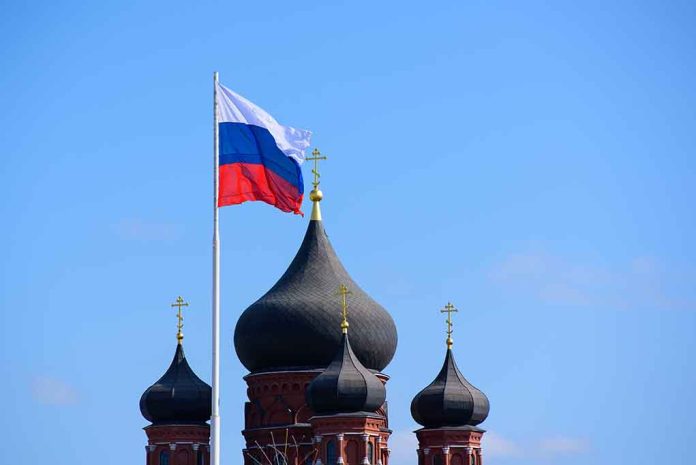
Russia’s nuclear doctrine update raises the stakes in its relations with the West, potentially lowering the threshold for nuclear retaliation.
At a Glance
- President Putin approved an updated nuclear doctrine, aligning with NATO’s collective defense principle.
- The new policy allows for nuclear response to attacks on Russia supported by nuclear powers.
- It includes provisions for nuclear retaliation if Belarus, a close ally, is attacked.
- The doctrine expands conditions for nuclear weapon use, including responses to various air attacks.
- Kremlin states the update aligns with the current geopolitical situation.
Russia’s Updated Nuclear Doctrine: A New Era of Deterrence
In a move that has sent ripples through the international community, Russian President Vladimir Putin has signed off on an updated nuclear doctrine. This revised policy, which comes at a time of heightened tensions with the West, particularly over the ongoing conflict in Ukraine, marks a significant shift in Russia’s approach to nuclear deterrence and potential retaliation.
The new doctrine, while maintaining nuclear weapons use as an “extreme measure,” expands the conditions under which Russia might consider employing its nuclear arsenal. It now includes provisions for nuclear response to attacks on Russia that are supported by nuclear powers, even if the attacking nation itself is not a nuclear state. This adjustment appears to be a direct response to the United States’ decision to supply longer-range missiles to Ukraine.
Expanded Conditions for Nuclear Response
Under the updated guidelines, Russia reserves the right to use nuclear weapons in response to a broader range of threats. These now include air attacks involving ballistic and cruise missiles, aircraft, drones, and other flying vehicles. This expansion is a significant departure from the previous doctrine, which only mentioned ballistic missile attacks as potential triggers for nuclear retaliation.
Notably, the doctrine now extends Russia’s nuclear umbrella to its close ally Belarus. Any aggression against Belarus could potentially trigger a nuclear response from Russia, effectively treating an attack on Belarus as an attack on Russian territory itself. This move aligns with NATO’s collective defense principle, where an attack on one member is considered an attack on all.
Balancing Act: Deterrence and De-escalation
Despite the seemingly aggressive nature of these changes, the Russian government maintains that the primary goal of the updated doctrine is deterrence. The Kremlin emphasizes that the policy aims to prevent military conflicts, including nuclear ones, by ensuring that potential adversaries understand the inevitability of retaliation.
Kremlin spokesperson Dmitry Peskov has stated that the doctrine was updated “in line with the current situation,” suggesting that it reflects Russia’s perception of the evolving geopolitical landscape. However, he also emphasized that the changes were not a direct response to any specific actions by other nations, including the United States’ decision to authorize Ukraine’s use of long-range missiles.
Implications for Global Security
The revision of Russia’s nuclear doctrine has significant implications for global security and international relations. While some experts argue that the changes do not represent a drastic alteration in Russia’s overall nuclear policy, they do signal a potential lowering of the threshold for nuclear weapon use. This could increase tensions and complicate diplomatic efforts, particularly in the context of the ongoing conflict in Ukraine.
As the international community grapples with these developments, it remains to be seen how Western nations will respond to Russia’s revised nuclear posture. The doctrine’s emphasis on deterrence and retaliation may lead to increased diplomatic efforts to reduce nuclear threats and prevent military escalation. However, it could also result in a new era of heightened tensions and strategic recalibration among global powers.
Sources:
- Putin Signs Russia’s Nuclear Doctrine Update Into Law
- Putin signs revised doctrine lowering threshold for nuclear response if Russia is attacked















